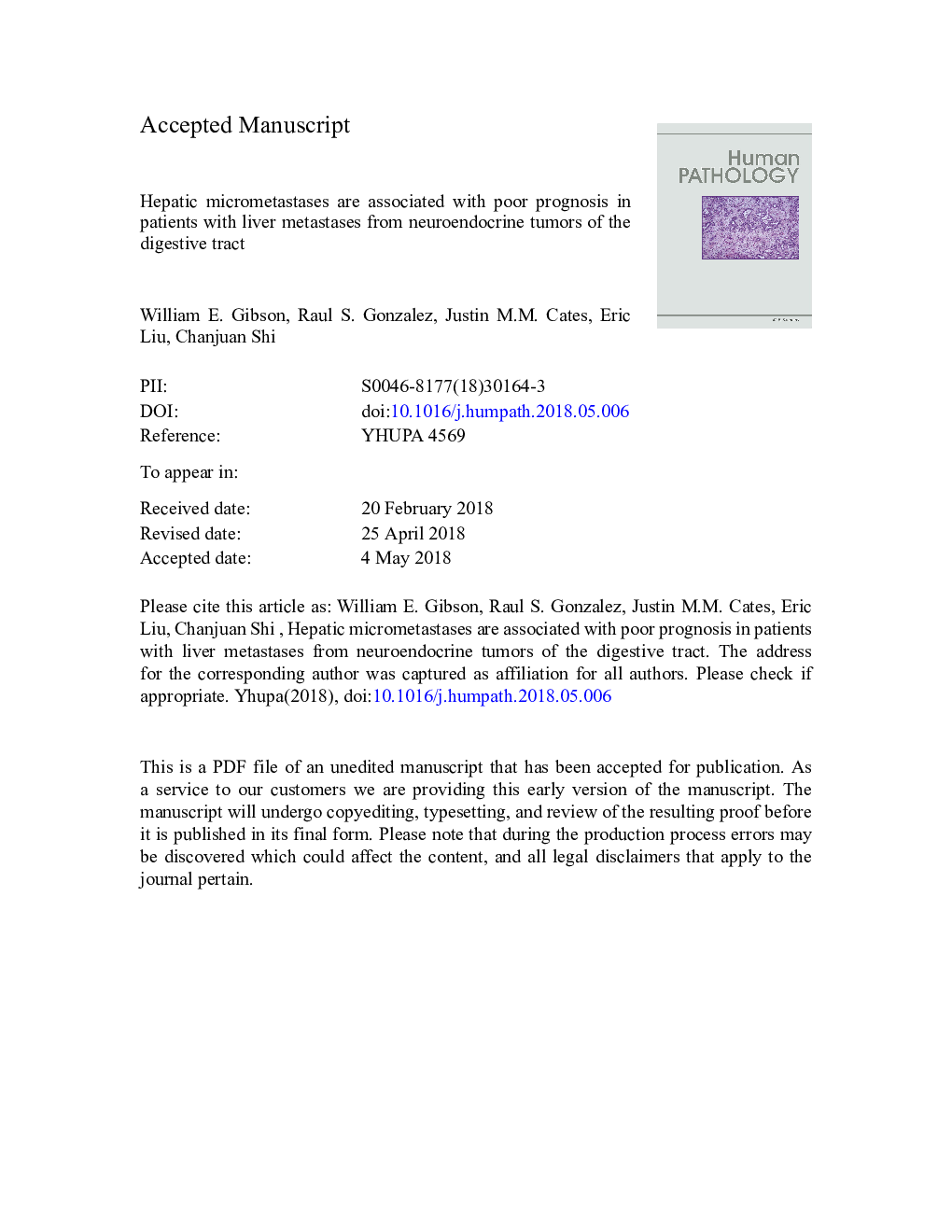| Article ID | Journal | Published Year | Pages | File Type |
|---|---|---|---|---|
| 8807443 | Human Pathology | 2018 | 27 Pages |
Abstract
Pathologic examination of hepatic metastasectomies from patients with metastatic small intestinal or pancreatic neuroendocrine tumor frequently reveals micrometastases undetectable by radiologic or macroscopic gross examination. This finding raises the possibility that undetectable micrometastases remain in these patients after metastasectomy. Here we examined liver resections for micrometastases and assessed their impact on prognosis. Hepatic metastasectomies from 65 patients with neuroendocrine tumor of the small intestine (Nâ¯=â¯43) or pancreas (Nâ¯=â¯22) were reviewed for the presence of micrometastases, which were defined as microscopic tumor foci â¤1 mm in greatest dimension. Medical records were also reviewed for patient demographics, clinical history, and follow-up data. Micrometastasis was identified in 36 (55%) of 65 hepatic resection specimens. More hepatic micrometastases were seen in small intestinal cases than in pancreatic cases (29/43, 67%, versus 7/22, 32%; Pâ¯<â¯.01). They were typically present within portal tracts, sometimes with extension into the periportal region or sinusoidal spaces away from the portal tracts. Patients without hepatic micrometastases had fewer macrometastases or more R0 hepatic resections than those with micrometastases. The presence of hepatic micrometastases was associated with poor overall survival both before (hazard ratio [HR] 3.43; 95% CI 1.14-10.30; Pâ¯=â¯.03) and after accounting for confounding variables in stratified Cox regression (HR 4.82; 95% CI 1.0621.79; Pâ¯=â¯.04). In conclusion, hepatic micrometastases are common in patients with metastatic small intestinal or pancreatic neuroendocrine tumor and are independently associated with poor prognosis. These data suggest that surgical resection of hepatic metastases is likely not curative in these patients.
Related Topics
Health Sciences
Medicine and Dentistry
Pathology and Medical Technology
Authors
William E. MD, Raul S. MD, Justin M.M. MD, PhD, Eric MD, Chanjuan MD, PhD,
